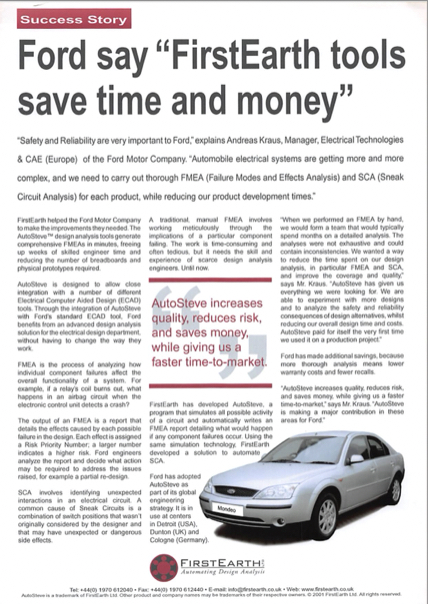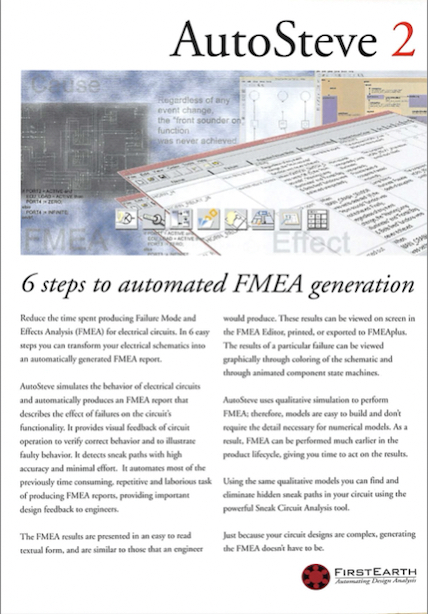FirstEarth

Research on qualitative modelling of electrical circuits was supported by several grants in collaboration with Jaguar Cars, later to become part of Ford. We used case studies from Jaguar, like cruse control systems, to build software models for diagnostic and analysis systems that could locate faults in such electrical systems. The standard industry design-analysis process of Failure Mode Effects Analysis (FMEA) became our focus for automation. This is a tedious task involving skilled engineers who have to process all parts of a circuit many times over. Our software technique reduced a typical two-week analysis down to an afternoon.
This line of research was then championed by Chris Price who ran a one-year project (1996) for Ford and Jaguar to build a commercial version of the FMEA software. A small team of developers worked on the re-implementation. The simulation core was written in C++ and the user interface was developed in Java, using the Swing UI framework. The software was designed to work as an extension to the TransCable electrical circuit package. Chris Price was the project manager and Dr Richard Joseph was the technical lead. The internal project name was AutoSteve, because the two FMEA engineers that were involved from Ford and Jaguar were both called Steve. The thought was that a better name may come in time, but the name stuck.
In 1997 Chris established and became the first Managing Director of a university supported spin-off company: FirstEarth. The aim was to produce and market production quality fault analysis software. Maintenance and support was provided to Ford and Jaguar, and the new company was able to sell to other companies.
FirstEarth started work with members of the same team who had developed AutoSteve. It operated from the University and later moved to premises in Aberystwyth town. The company developed the technology, providing more sophisticated versions of the analysis. The company also introduced a complimentary product, Sneak Explorer, which expanded the work to cover sneak circuits in electrical systems. The software was extended to work as an extension to an electrical circuit tool from Mentor Graphics.
In 2000, Chris Price returned to the University and became the Head of Department for Computer Science. Nigel Hughes, a graduate of the department, then became the Managing Director. The company raised investment capital from the University's Innovation Fund and the company grew to over 10 employees. The initial market for the technology was the automotive industry, but the company also sold to companies in the rail and aerospace industries.
In 2003, the company and its technology was sold to Mentor Graphics, now part of Siemens, where the technology is still developed and in use today.

